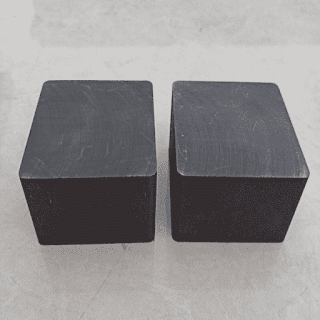Anti-oxidation coating graphite electrode
The anti-oxidation coating graphite electrode is a coated electrode made of graphite electrode as the substrate and sprayed with an oxidation-resistant coating on the surface of the body. The preparation process is to fuse a thin layer of aluminum-based cermet on the surface of the processed graphite electrode. The coating material, which can conduct electricity and is resistant to oxidation, is formed by the eutectic of aluminum and refractory mud with multiple components. Its characteristics and functions are as follows:
1. Provide the electrode with a high-efficiency oxygen barrier layer and a highly conductive outer surface layer, which can prevent the electrode surface from being oxidized and reduce electrode consumption, and can reduce the current density inside the electrode.
2. The anti-oxidation coating can withstand quite high temperature without melting, and the decomposition temperature of the coating is 1850. Above C.
3. The coating is well combined with the electrode surface and has a similar coefficient of linear expansion.

4. The conductivity of the coating is higher than that of the graphite electrode substrate, so most of the secondary current will be carried by the coating, which can reduce the resistance heating effect at the electrode joints and increase the current density through the electrode.

Comments
Post a Comment